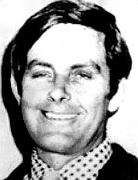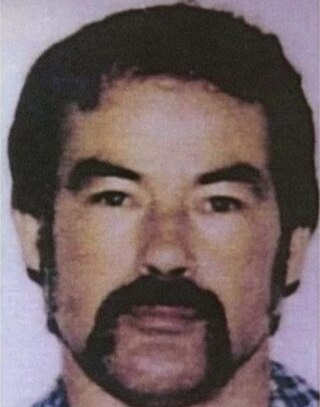The Melbourne gangland killings were the murders of 36 underworld figures in Melbourne, Victoria, Australia, between January 1998 and August 2010. The murders were retributive killings involving underworld groups. The deaths caused a power vacuum within Melbourne's criminal community, and rival factions fought for control and influence. Many of the murders remain unsolved, although detectives from the Purana Taskforce believe that Carl Williams was responsible for at least ten of them. The period culminated in the arrest of Williams, who pleaded guilty on 28 February 2007 to three of the murders.

Roger Caleb Rogerson was an Australian detective sergeant in the New South Wales Police Force and a convicted murderer. During his career, Rogerson was one of the most decorated officers in the force, having received at least thirteen awards for bravery, outstanding policemanship and devotion to duty including the Peter Mitchell Trophy, the highest annual police award. During his time in office he was implicated in—but never convicted of—two killings, bribery, assault and drug dealing.

Donald Bruce Mackay was an Australian businessman and anti-drug campaigner. He disappeared in 1977, but his body has never been found. In 1986, James Bazley was convicted on his murder.
This is a timeline of major crimes in Australia.
Arthur Stanley "Neddy" Smith was an Australian criminal who was convicted of drug trafficking, theft, rape, armed robbery, and murder.

Forensic Investigators: Australia's True Crimes is an Australian television show hosted by Lisa McCune which aired on the Seven Network. It aired for three seasons from 2004 to 2006.

Juanita Joan Nielsen was an Australian newspaper owner, publisher, journalist, model, urban conservationist, and heiress. She disappeared after attending a meeting at the Carousel nightclub in Kings Cross on 4 July 1975. Her body has never been found.
Leonard Arthur McPherson was one of the most notorious and powerful Australian career criminals of the late 20th century. McPherson is believed to have controlled most of Sydney's organised crime activity for several decades, alongside his contemporary Abe Saffron and associate, bookmaker George Freeman.
Ray "Gunner" Kelly, MBE was an Australian police officer who was a detective inspector with NSW Police, he became famous during his career owing to his high-profile cases and results, but who was later alleged to have been deeply involved in corruption and organised crime.
The Wanda Beach Murders, also known simply as "Wanda", were the unsolved murders of Marianne Schmidt and Christine Sharrock at Wanda Beach near Cronulla in Sydney, New South Wales, Australia, on 11 January 1965. The victims, both aged 15, were best friends and neighbours from the suburb of West Ryde, and their partially buried bodies were discovered the next day. The brutal nature of the slayings and the fact that they occurred on a deserted, windswept beach brought massive publicity to the case. By April 1966, police had interviewed some 7,000 people, making it the largest investigation in Australian history. It remains one of the most infamous unsolved Australian murder cases of the 1960s, and New South Wales' oldest unsolved homicide case.

Sallie-Anne Huckstepp was an Australian writer, sex worker and whistleblower, who was the victim of a homicide. She came to attention in 1981 for speaking out about police corruption in Sydney, Australia. Huckstepp's murder remains unsolved.

Blue Murder is a two-part Australian television crime drama miniseries produced by the Australian Broadcasting Corporation in 1995, and is based on true events.
Frederick Claude Krahe was an Australian New South Wales police officer and detective.
Geoffrey Walter Edelsten was an Australian businessman and former physician known for founding the health care company Allied Medical Group.
Shirley June Finn, née Shewring, was an Australian brothel keeper, nightclub operator and socialite who was shot dead at about midnight on 22–23 June 1975 in Perth, Western Australia. Her body, dressed in an elaborate ball gown and expensive jewellery, was found at dawn in her car, which was parked on a golf course next to a busy freeway. The murder is notable because of Finn's close relationship with Western Australia Police detectives who, in that era, controlled and regulated Perth's prostitution and gambling activities. The crime remains unsolved.
Underbelly: A Tale of Two Cities, the second series of the Nine Network crime drama series Underbelly, originally aired from 9 February 2009 to 4 May 2009. It is a thirteen-part series loosely based on real events that stemmed from the marijuana trade centred on the New South Wales town of Griffith. The timeline of the series is the years between 1976 and 1987. Underbelly: A Tale of Two Cities primarily depicts the Mr. Asia drug syndicate and its influence on crime in Australia. Among the characters presented are real-life criminals Robert Trimbole, Terry Clark, George Freeman, Christopher Dale Flannery, Alphonse Gangitano and the Kane Brothers. The mini-series is a prequel to the 2008 production Underbelly, which was about the Melbourne gangland killings and forms part of the Underbelly series.

Ivan Robert Marko Milat, commonly referred to in media as the Backpacker Murderer, was an Australian serial killer who abducted, assaulted, robbed and murdered two men and five women in New South Wales between 1989 and 1992. His modus operandi was to approach backpackers along the Hume Highway under the guise of providing them transport to areas of southern New South Wales, then take his victims into the Belanglo State Forest where he would incapacitate and murder them. Milat is also suspected of having committed many other similar offences and murders around Australia.
Derek Ernest Percy was an Australian suspected serial killer and convicted child killer who was also a person of interest linked to the mysterious deaths and disappearances of multiple children in the 1960s, including the Beaumont disappearances and the Wanda Beach murders.
The Sydney gangland wars were a series of murders and killings of several known criminal figures and their associates that took place in Sydney, Australia, during the 1980s. A vast majority of the murders were seen as retributive killings, attempts to control Sydney's drug trade, and expansion of criminal territory. A significant number of the murders that took place during the Sydney gangland war went unsolved, mainly due to corrupt police and their association with members of the Sydney Underworld.






